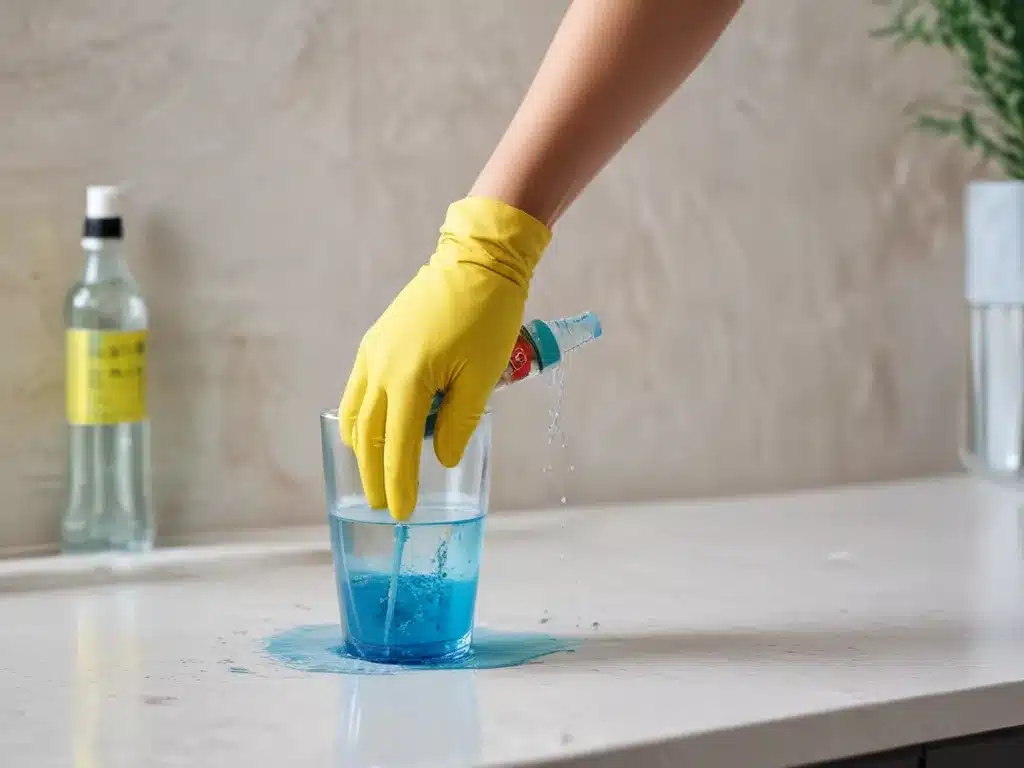Introduction
In the midst of the ongoing COVID-19 pandemic, disinfecting surfaces has become a crucial part of our daily routines. While commercial disinfectants are readily available, creating a homemade solution using alcohol and water can be an effective and cost-efficient alternative. In this comprehensive guide, I will explore the process of disinfecting surfaces with an alcohol and water mix, its effectiveness, safety considerations, and various applications.
Understanding the Effectiveness of Alcohol-Based Disinfectants
Alcohol-based disinfectants, such as a mixture of alcohol and water, have proven to be highly effective against a wide range of microorganisms, including bacteria, viruses, and fungi. The active ingredient in this solution is the alcohol itself, typically ethanol or isopropyl alcohol.
How does alcohol disinfect surfaces?
The alcohol in the solution disrupts the cell membrane of microorganisms, causing them to dehydrate and die. This process is known as “denaturing,” and it effectively renders the microorganisms inactive and unable to replicate or cause harm.
What types of alcohol are suitable for disinfecting?
Both ethanol (ethyl alcohol) and isopropyl alcohol (isopropanol) are suitable for creating a disinfecting solution. However, it is important to note that the concentration of alcohol plays a crucial role in its effectiveness. The optimal concentration range for disinfecting purposes is typically between 60% and 80% alcohol in water.
Preparing the Alcohol and Water Mix
Creating an effective disinfecting solution with alcohol and water is a straightforward process, but it is essential to follow the correct proportions and safety guidelines.
Ingredients and Supplies Needed
- Ethanol (ethyl alcohol) or isopropyl alcohol (isopropanol)
- Distilled water or clean, potable water
- Clean spray bottle or container with a tight-fitting lid
- Measuring cup or graduated cylinder
Step-by-Step Instructions
- Determine the desired concentration of alcohol in your solution. As mentioned earlier, the optimal range is between 60% and 80% alcohol.
- Measure the appropriate amount of alcohol and water based on the desired concentration. For example, to create a 70% alcohol solution using isopropyl alcohol, mix 7 parts of isopropyl alcohol with 3 parts of water.
- Pour the measured amounts of alcohol and water into the clean spray bottle or container.
- Secure the lid tightly and gently shake or swirl the container to mix the solution thoroughly.
- Label the container clearly with the contents and the date of preparation.
Safety Considerations
- Use caution when handling alcohol, as it is flammable and can cause irritation if inhaled or exposed to the eyes or skin.
- Avoid ingesting the alcohol and water mix, as it is not intended for consumption.
- Keep the solution out of reach of children and pets.
- Wear gloves and work in a well-ventilated area when preparing and using the disinfecting solution.
Applying the Alcohol and Water Mix
Once you have prepared the alcohol and water mix, it is essential to understand how to apply it effectively and safely to disinfect various surfaces.
Surfaces Suitable for Disinfection
The alcohol and water mix can be used to disinfect a wide range of hard, non-porous surfaces, including:
- Countertops
- Table tops
- Door handles
- Light switches
- Keyboards and computer peripherals
- Bathroom fixtures
- Stainless steel surfaces
- Plastic surfaces
Application Techniques
- Clean the surface first by removing any visible dirt, debris, or grime. This step ensures that the disinfectant can effectively reach and kill any remaining microorganisms.
- Apply the alcohol and water mix directly to the surface using a clean cloth, spray bottle, or paper towel.
- Allow the solution to remain in contact with the surface for the recommended contact time, typically between 30 seconds and 5 minutes, depending on the specific microorganism you aim to eliminate.
- Once the recommended contact time has elapsed, wipe or rinse the surface with clean water to remove any residual solution.
- Allow the surface to air dry completely before use or contact.
Frequency and Precautions
- Disinfect high-touch surfaces frequently, especially in areas with heavy traffic or potential exposure to microorganisms.
- Always read and follow the safety instructions provided on the alcohol or isopropyl alcohol product label.
- Avoid using the alcohol and water mix on porous surfaces, as it may not be as effective and could potentially cause damage or discoloration.
- Do not use the solution on electronics or electrical equipment without consulting the manufacturer’s guidelines, as alcohol can potentially damage sensitive components.
Additional Applications and Considerations
While the primary use of an alcohol and water mix is for disinfecting surfaces, there are several other applications and considerations worth mentioning.
Sanitizing Hands and Skin
In the absence of soap and water, an alcohol-based hand sanitizer can be an effective alternative for cleaning hands and preventing the spread of germs. The alcohol and water mix can be used as a makeshift hand sanitizer, but it should be applied to clean hands and allowed to dry completely before touching surfaces or food.
Cleaning and Disinfecting Wounds
Alcohol solutions have long been used as antiseptics for cleaning minor cuts, scrapes, and wounds. However, it is important to note that alcohol can cause stinging and irritation, especially on open wounds. Always consult with a healthcare professional before using an alcohol solution on wounds or broken skin.
Environmental Impact
While alcohol and water mixes are generally considered safe for the environment, it is important to dispose of any unused solution properly. Avoid pouring large quantities down drains or into waterways, as alcohol can have negative impacts on aquatic life and ecosystems.
Conclusion
Creating and using an alcohol and water mix for disinfecting surfaces is a simple, cost-effective, and highly effective solution in the fight against microorganisms. By following the proper proportions, application techniques, and safety precautions, this homemade disinfectant can help maintain a clean and hygienic environment in homes, workplaces, and public spaces. Remember to always prioritize safety and seek professional advice if you have any concerns or specific disinfection needs.







